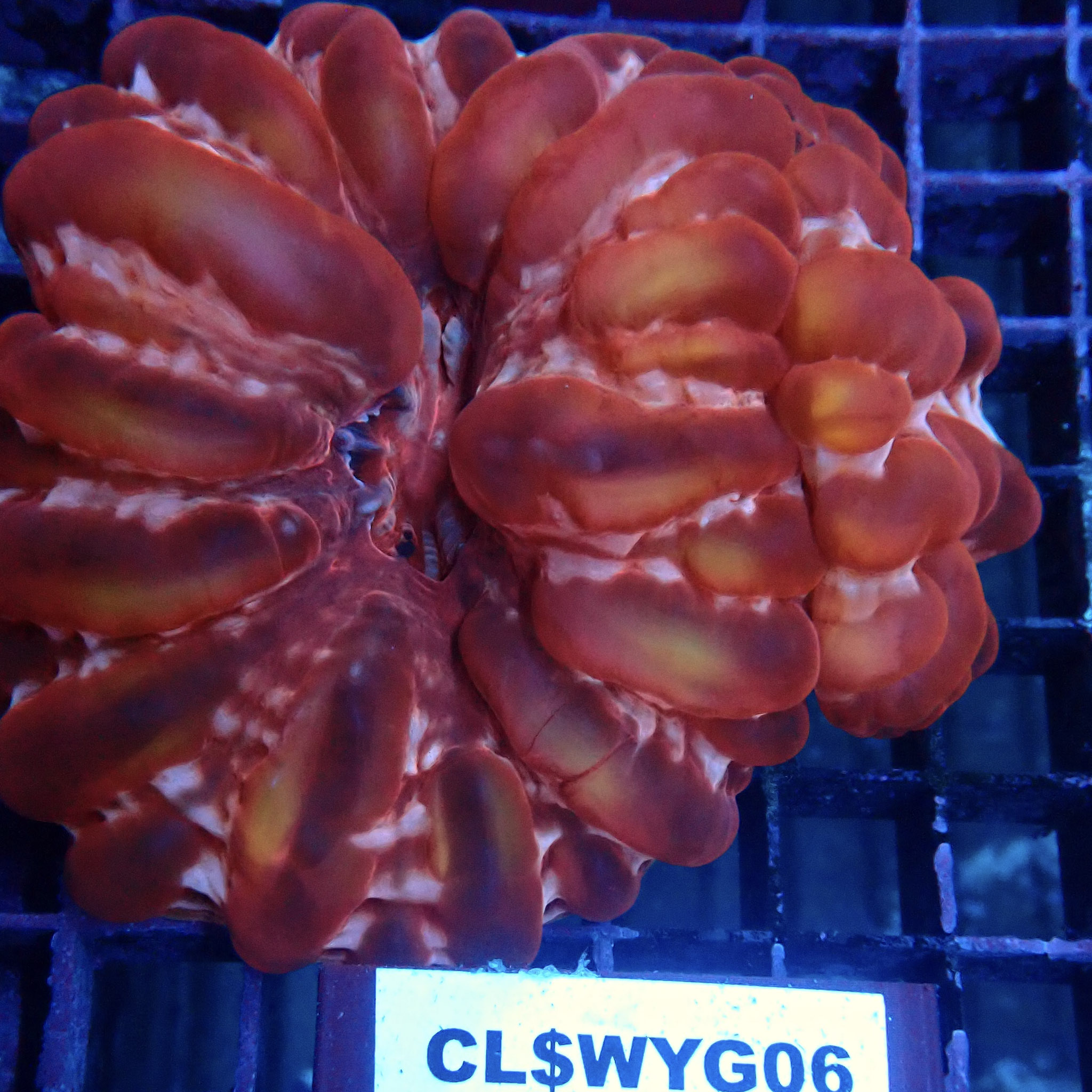Cynarina lacrymalis

Cyanarina lacrymalis, commonly known as Cat?s Eye Coral, Solitary Cup Coral, Button Coral, or Teary Eye Coral, is one of the largest single-polyp corals.
They have a circular or oval skeleton which can be seen beneath the transluscent bubble-shaped lobes over it.
Colours can range from bright hues of red, pink, and green to drab browns or gentle pastels. The center can be the same or a contrasting color.
This coral is smooth with bubble-like lobes during the daytime, but at night the corals deflate and it shoots out long tentacles for feeding. This night time appearance resembles an anemone, and if the tentacles are disturbed, it will contract in the same fashion.
Their degree of expansion is an excellent indicator of water quality ? a ring of feeder tentacles appear from the swollen polyp when water conditions are good.
In the wild, Cyanarina lacrymalis are found attached to rock substrates on overhangs and reef slopes, usually facing upwards. They can also be occasionally free-living on muddy substrates.
Basic Water Parameters
pH
8.0 to 8.3
Salinity
34 - 36ppt
Temperature
24.0 - 26.0 Celsius
Husbandry Requirements
Lighiting
50-100 PAR - 110-175 PAR
Flow
Passive circulation - Some turbulence required
Aggressiveness
Limited ability to damage other corals. - Has sweeper tentacles and/or an ability to sting some other corals.
Acclimation Guide
- It is highly recommended to acclimate all corals to a new environment to prevent shocking corals.
- Place the corals in the water from the packing bags and slowly add the water from new environment (Dripping method is recommended).
- Use the water parameter above as a guide.
- When the vessel becomes full , replace the water with the new environment water by a small amount at a time.
- Ensure the water temperature matches with the new environment’s water.
- After the corals have spent adequate time in the acclimation water, gently place the corals to a new environment.
- It is recommended to place new corals under lower light intensity than usually required. Once corals show no signs of stress, it can be moved to higher lighting area gradually.”

